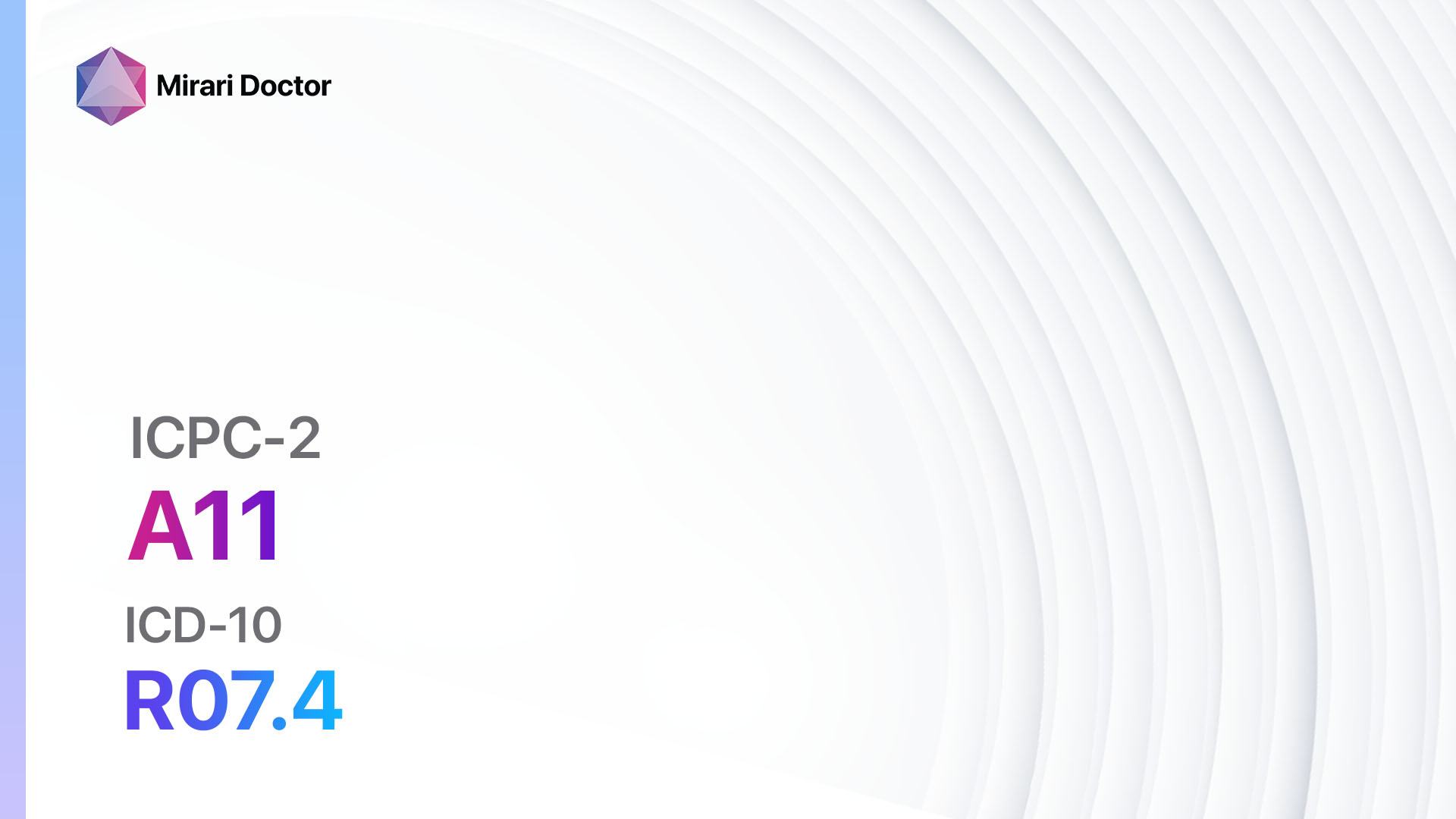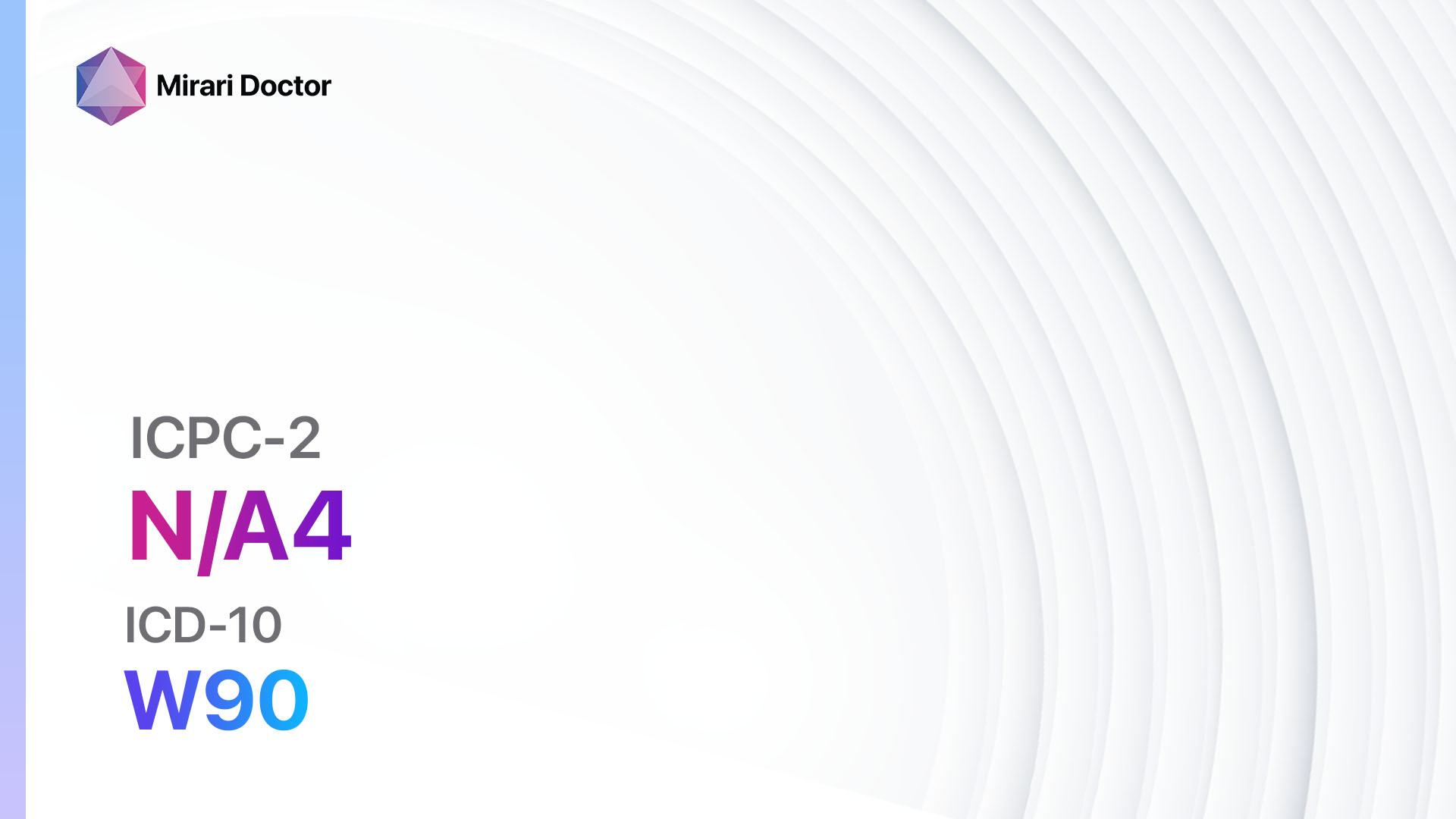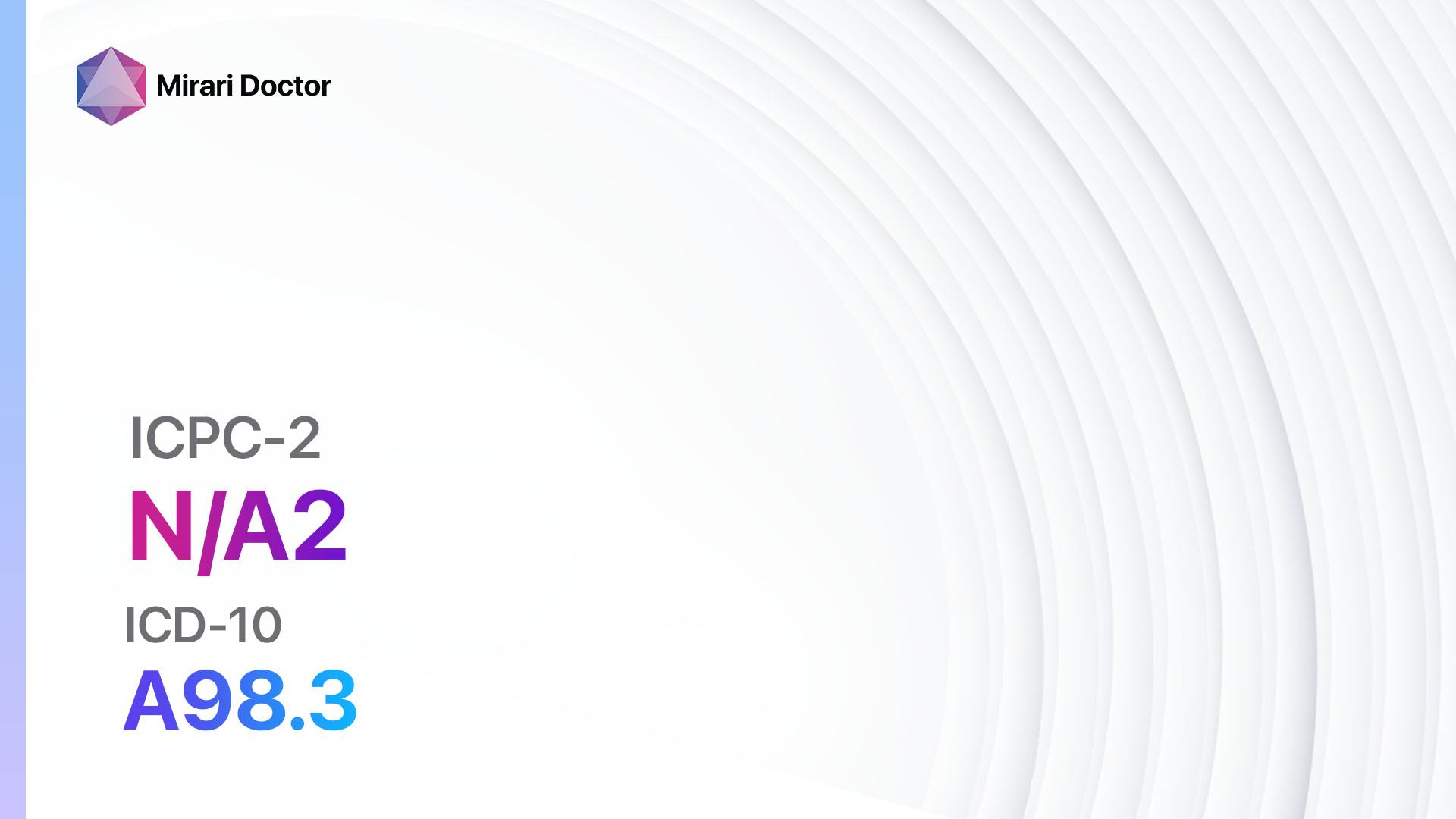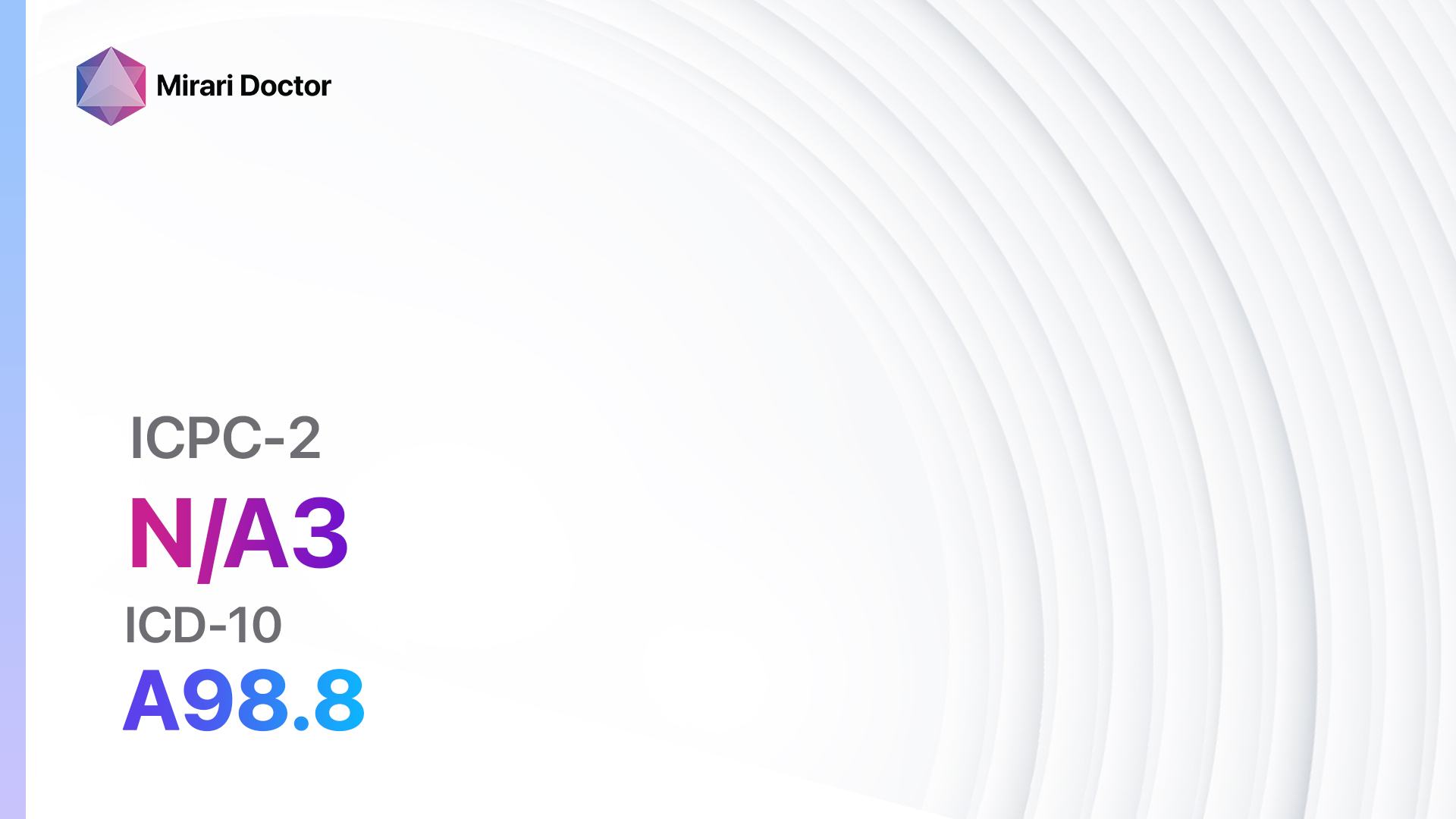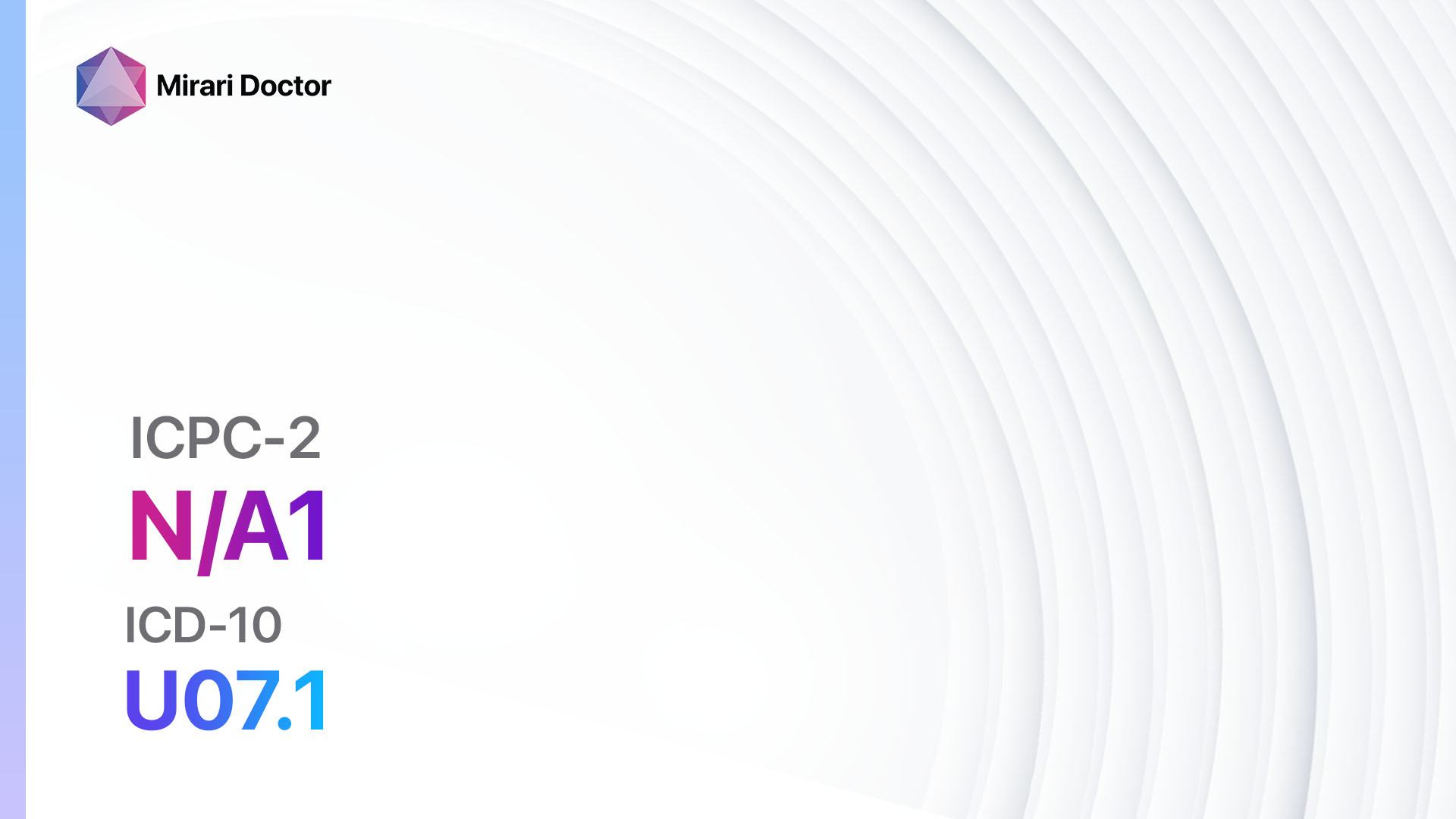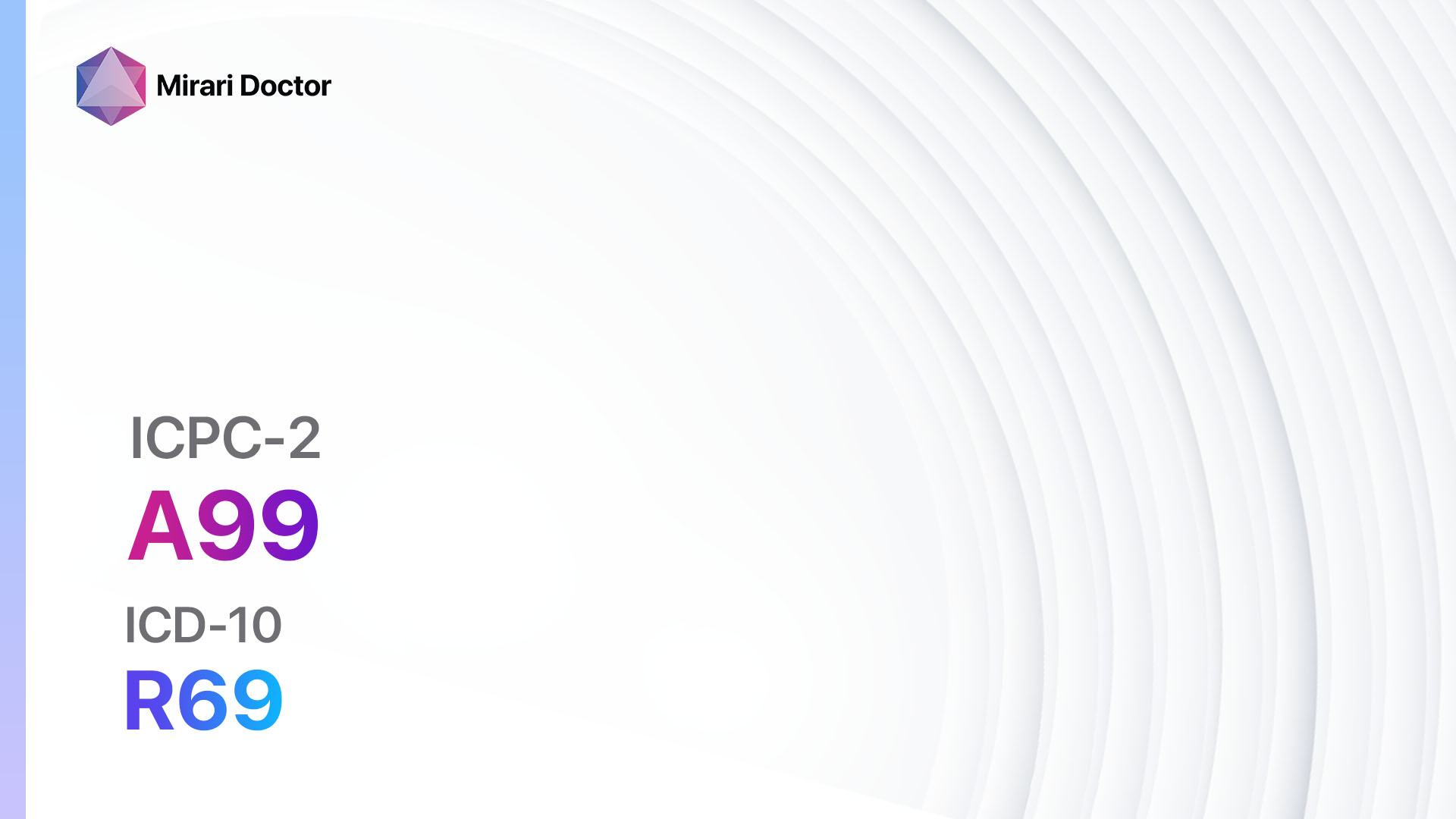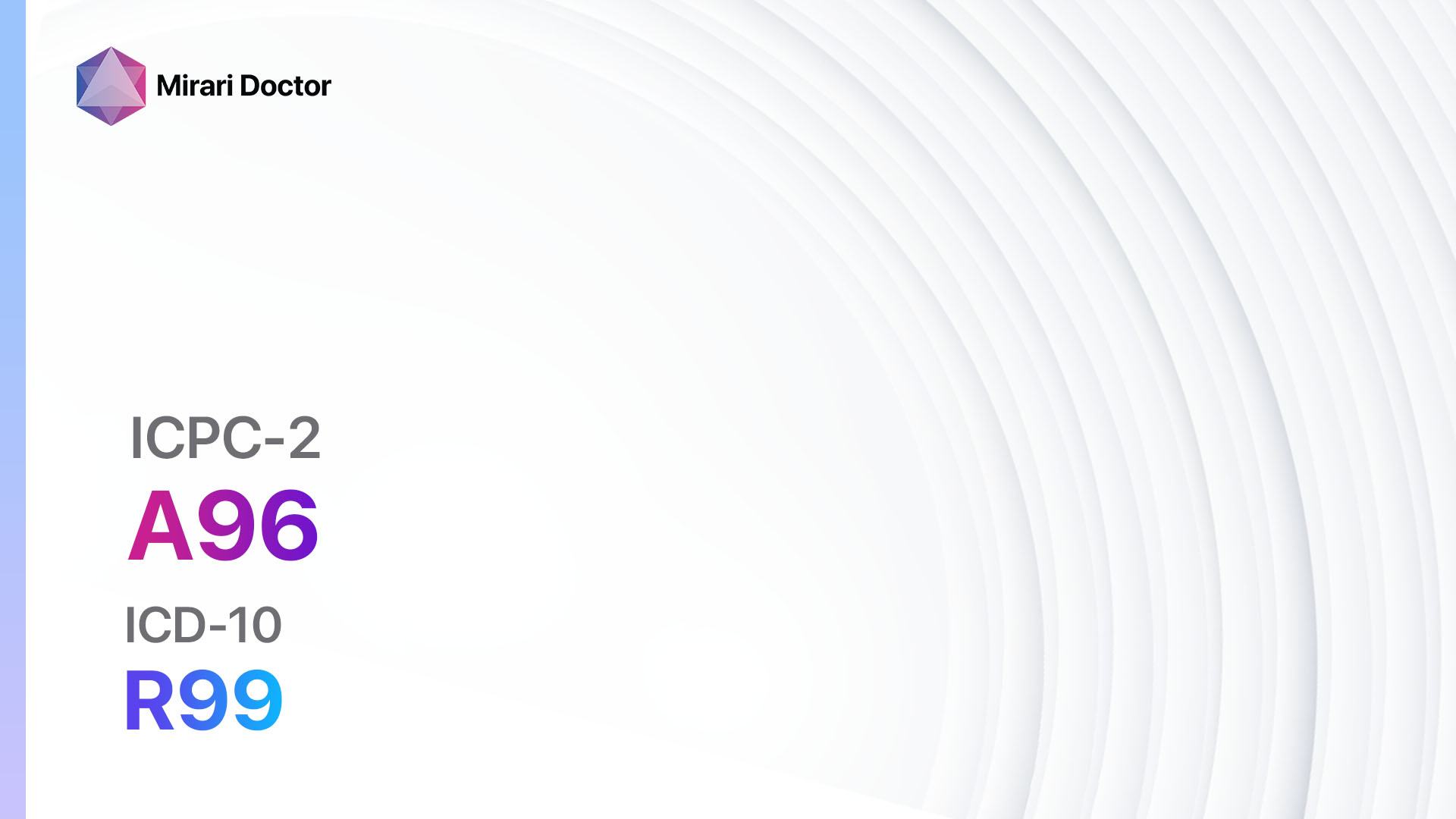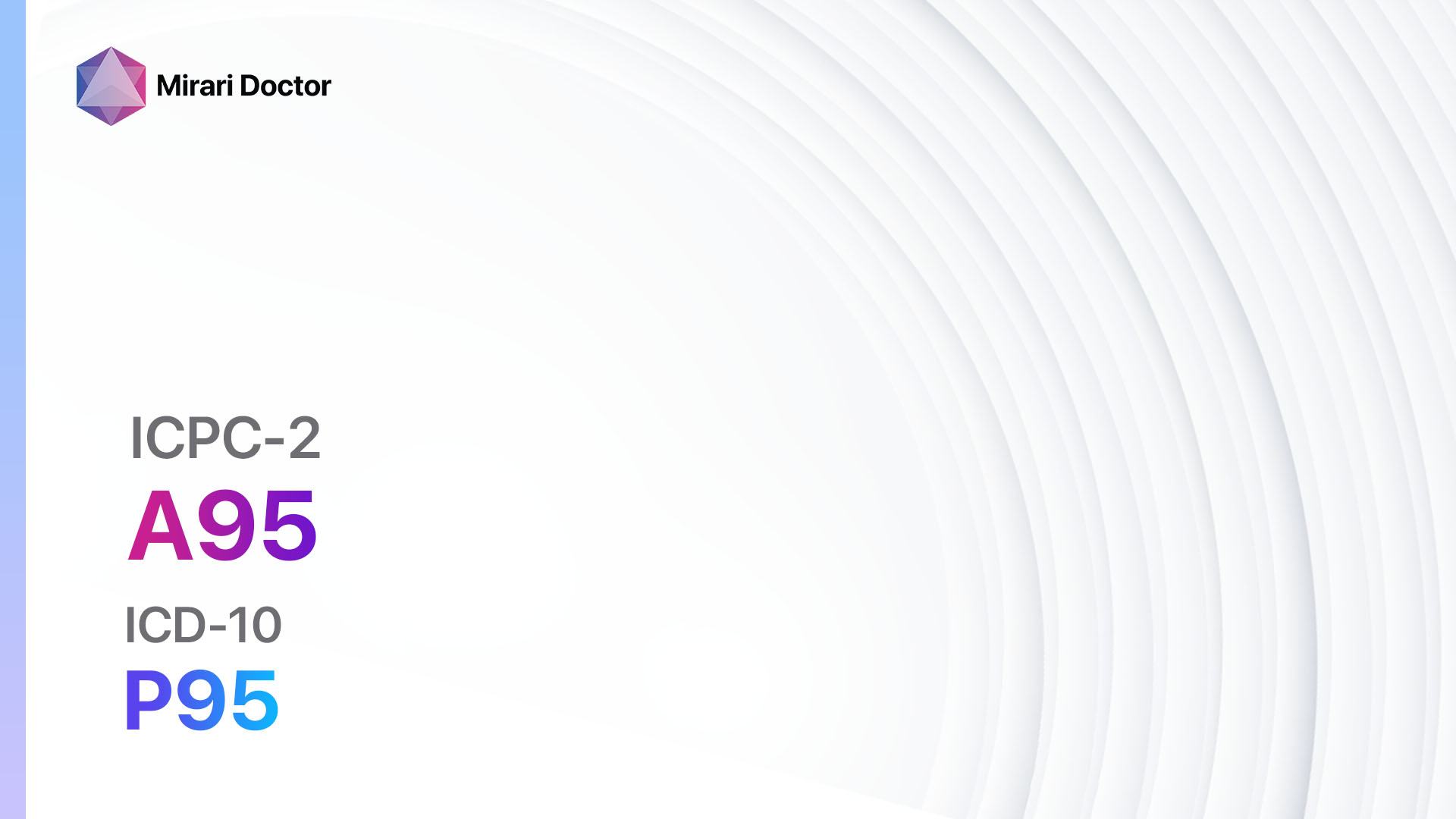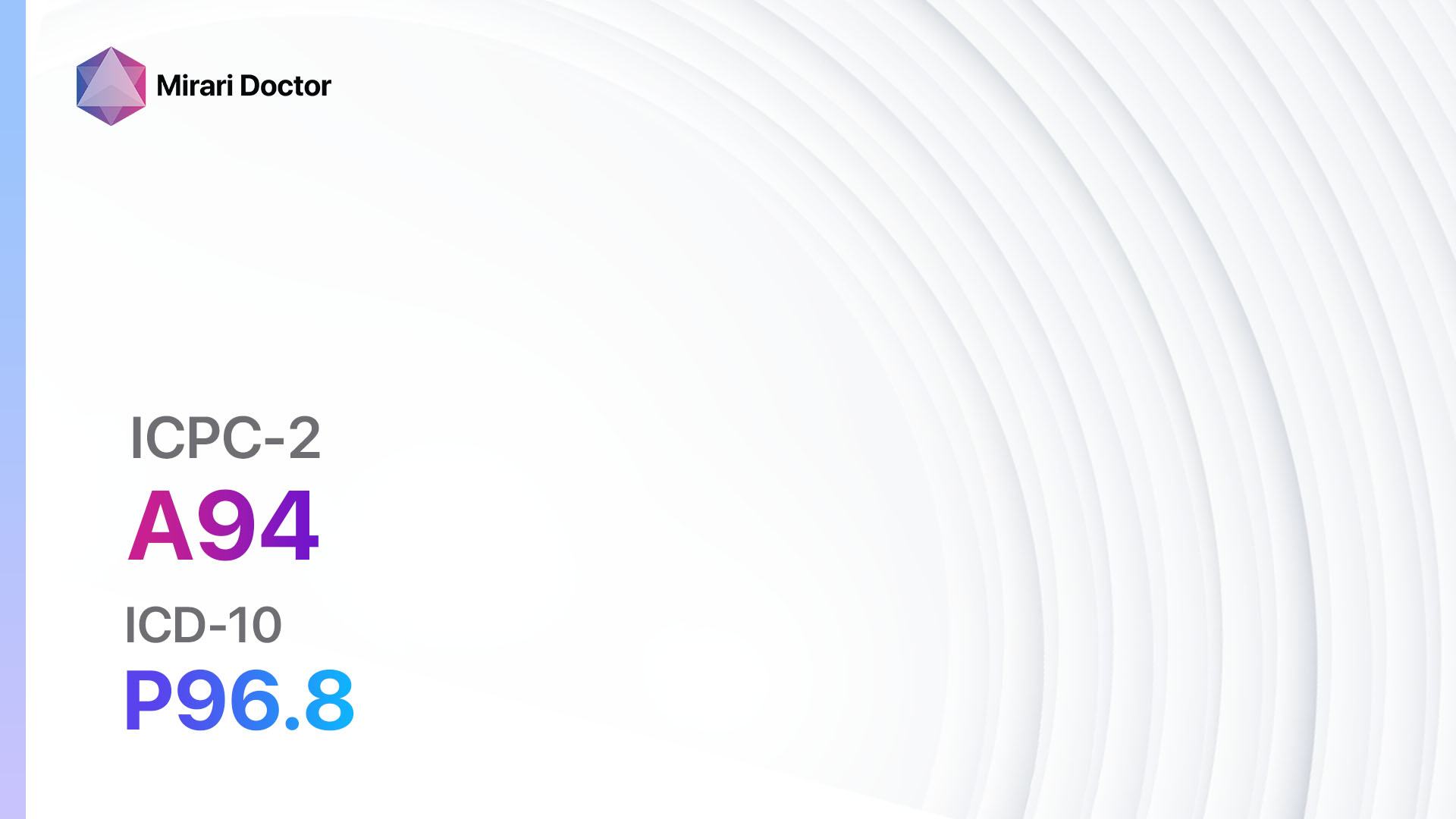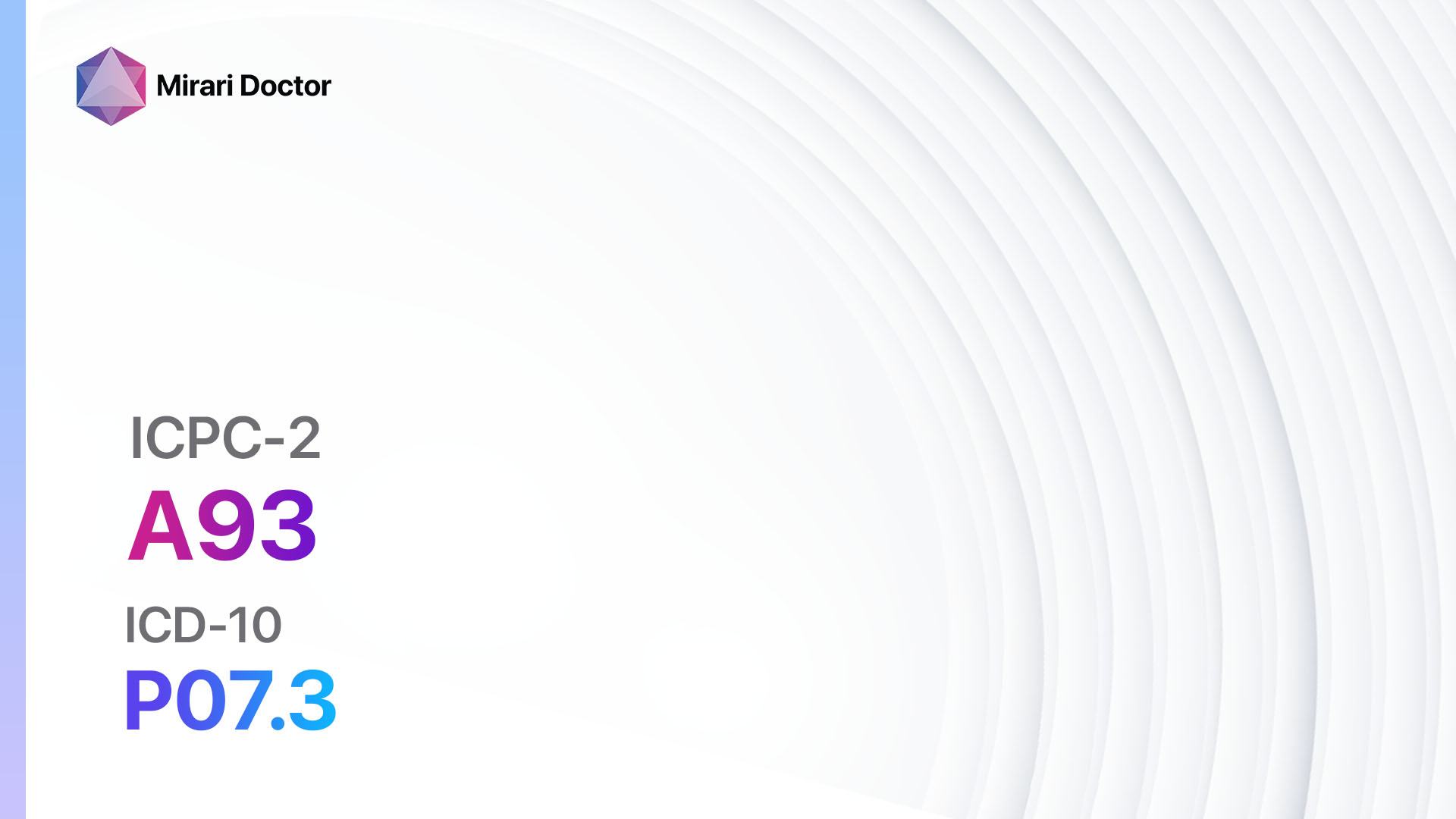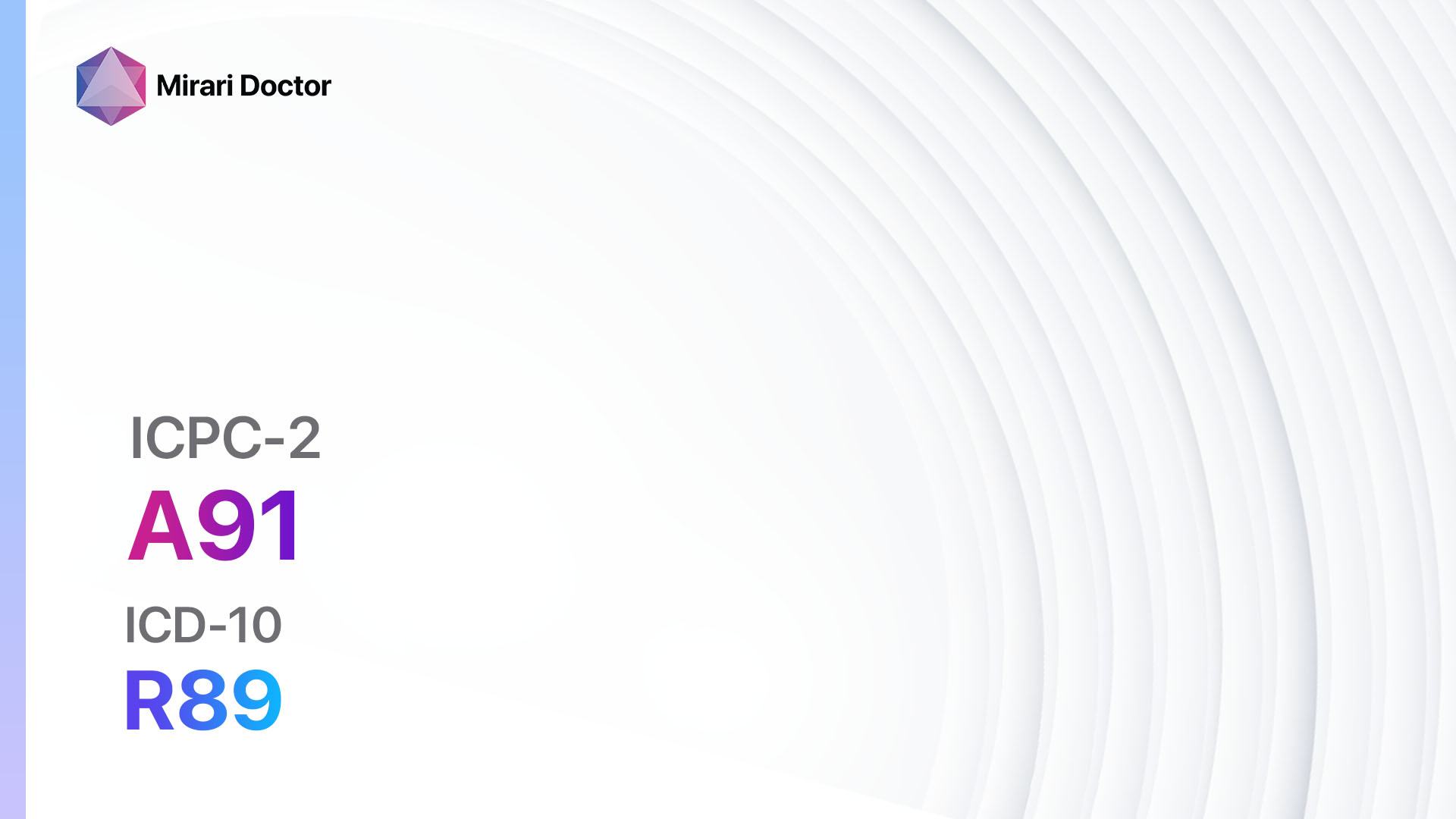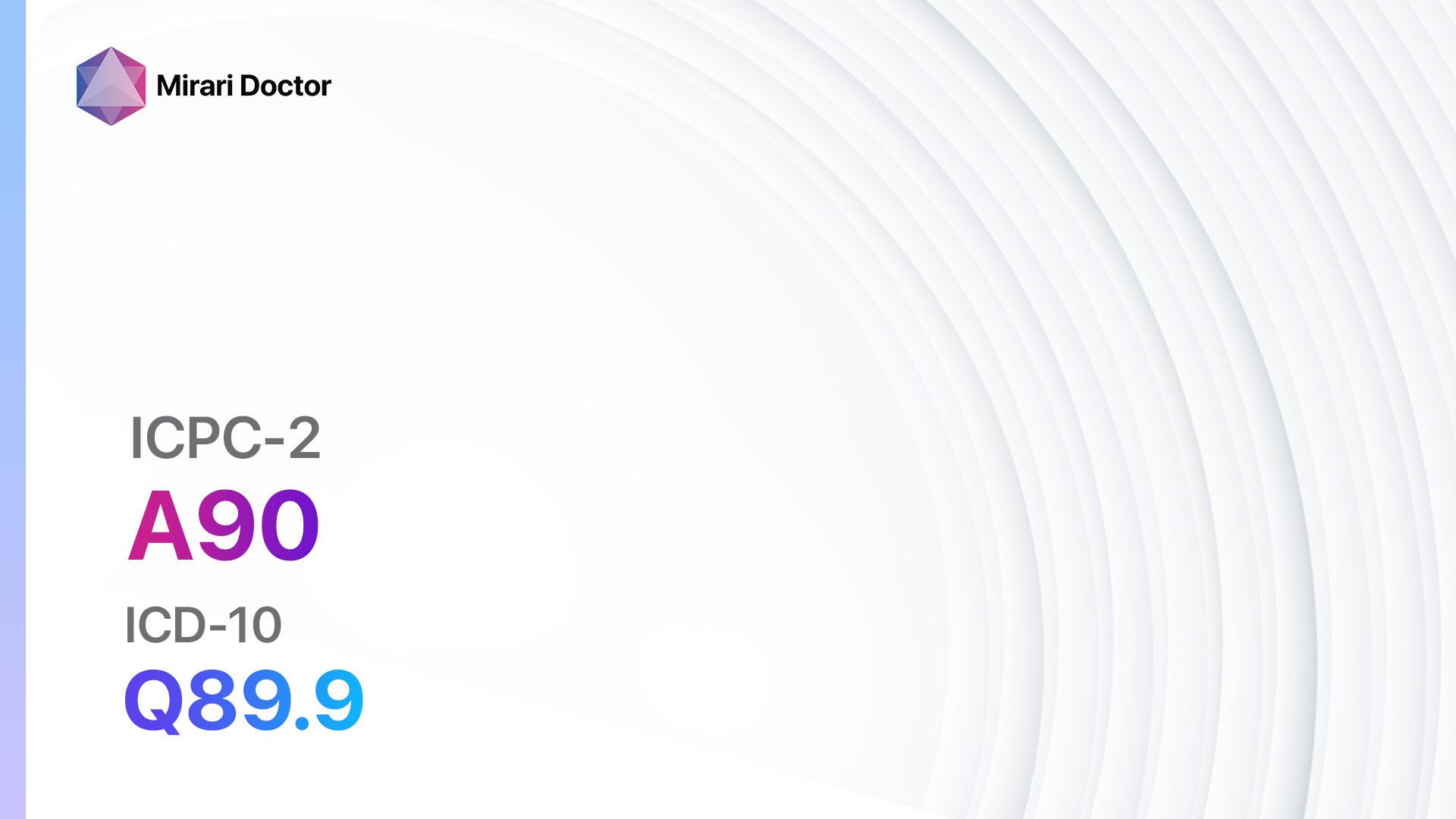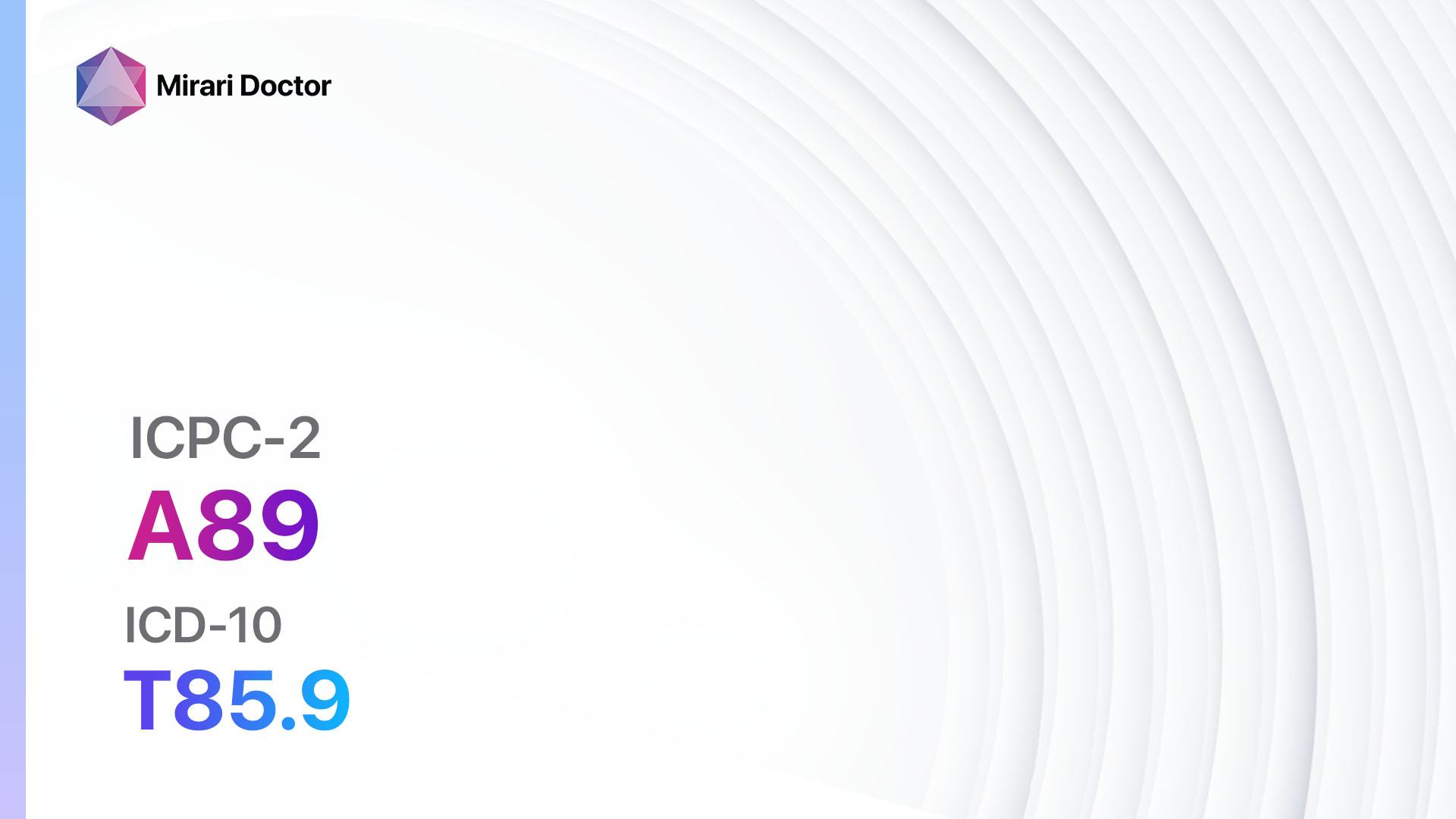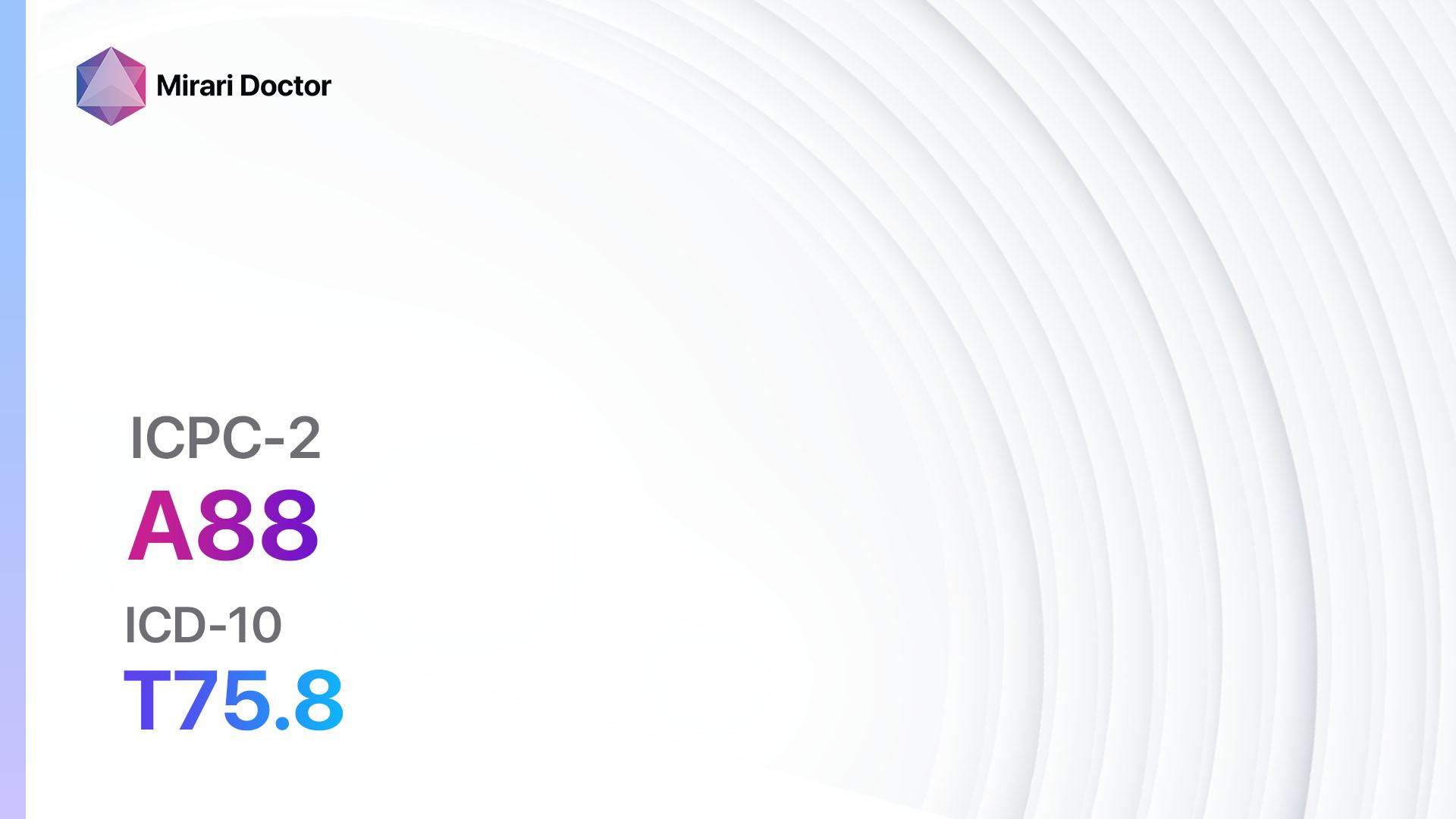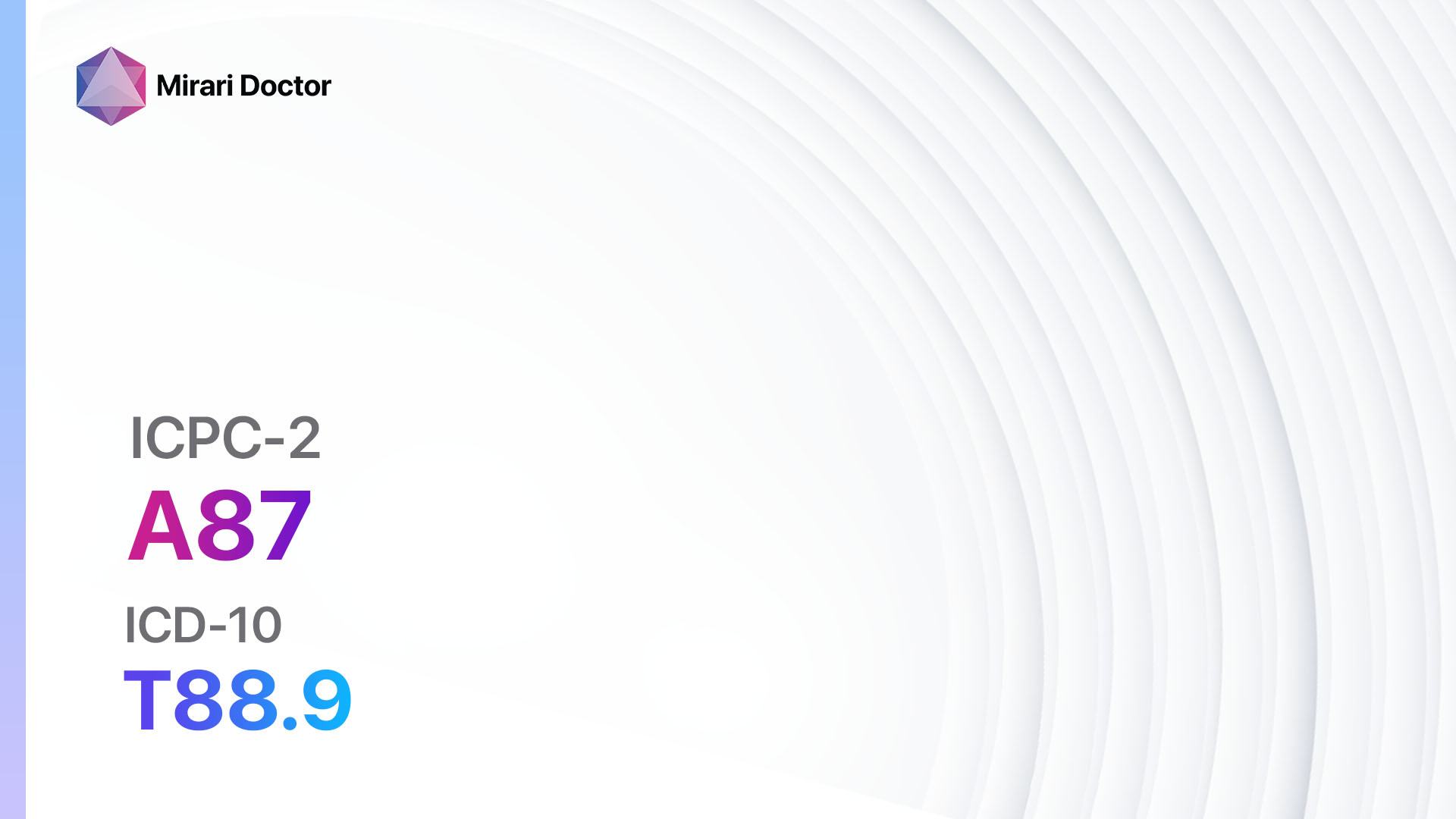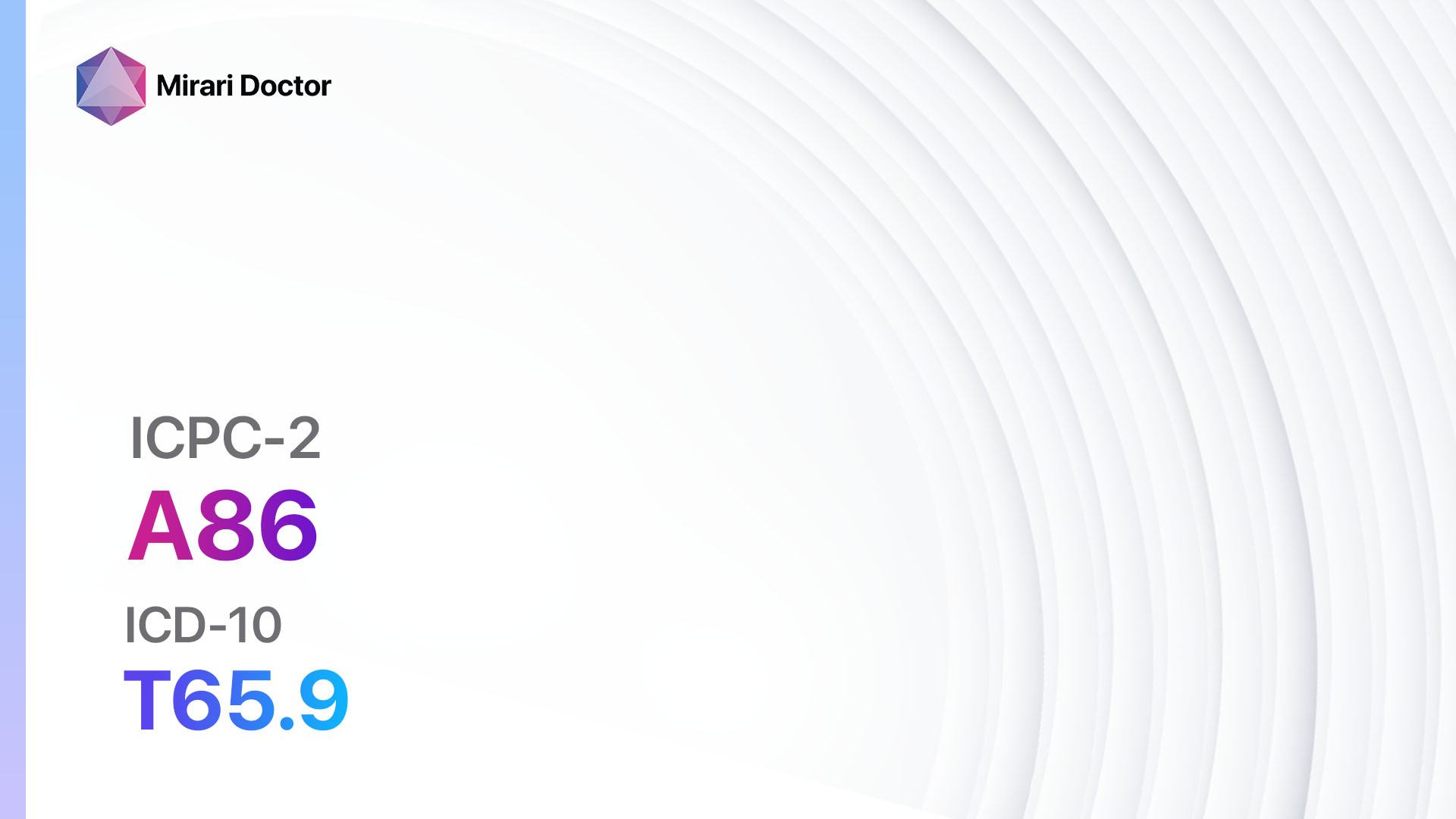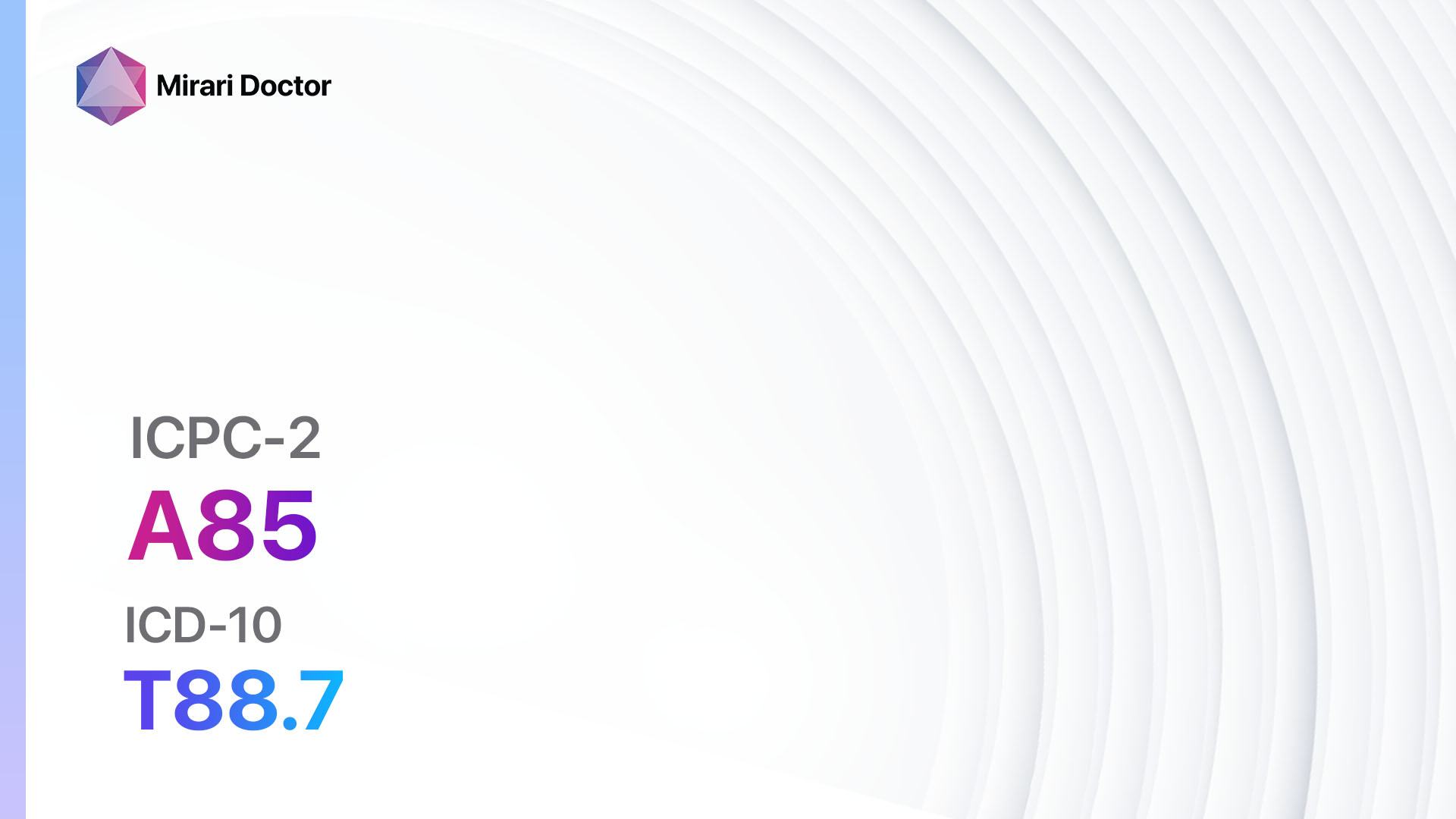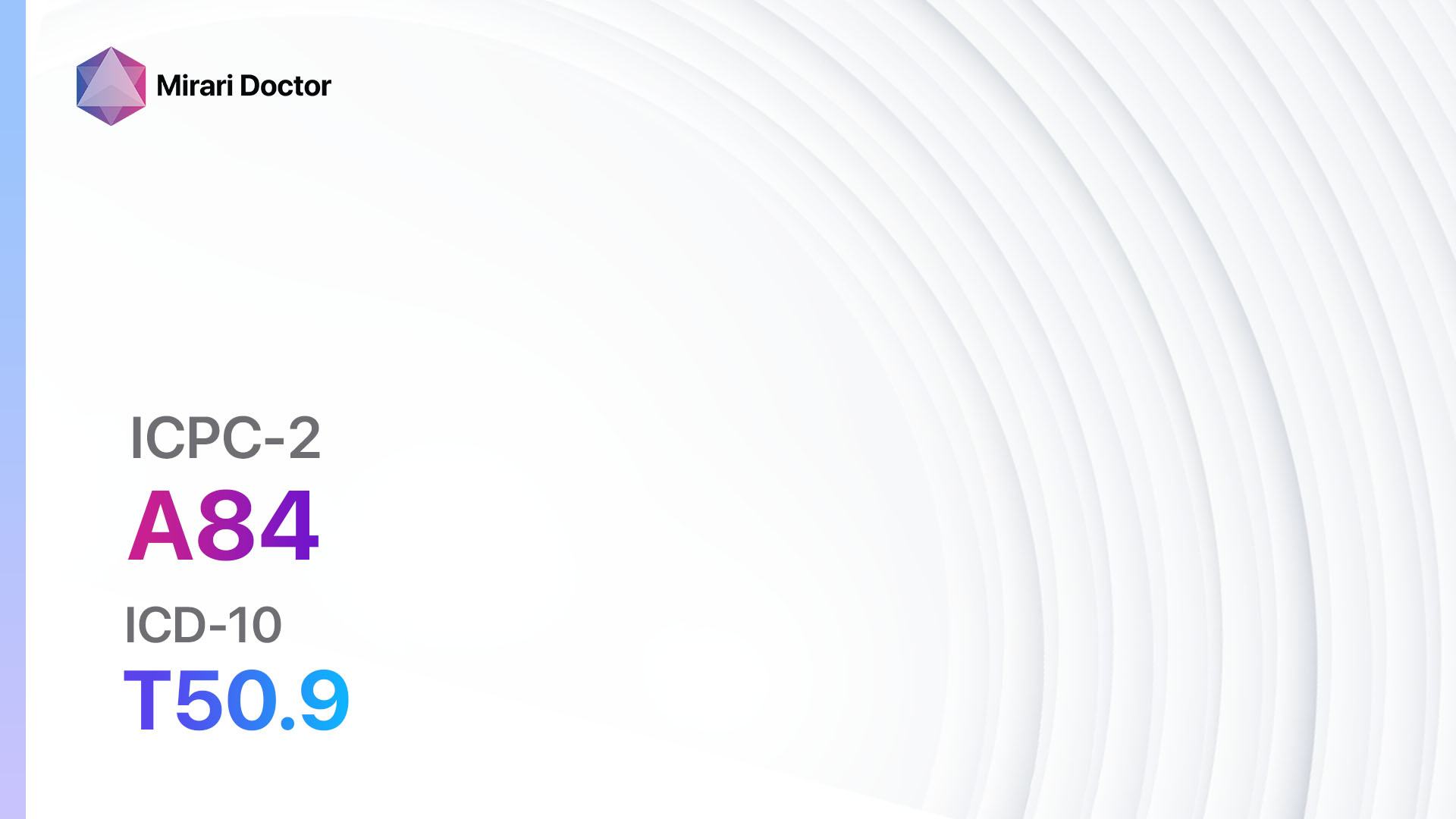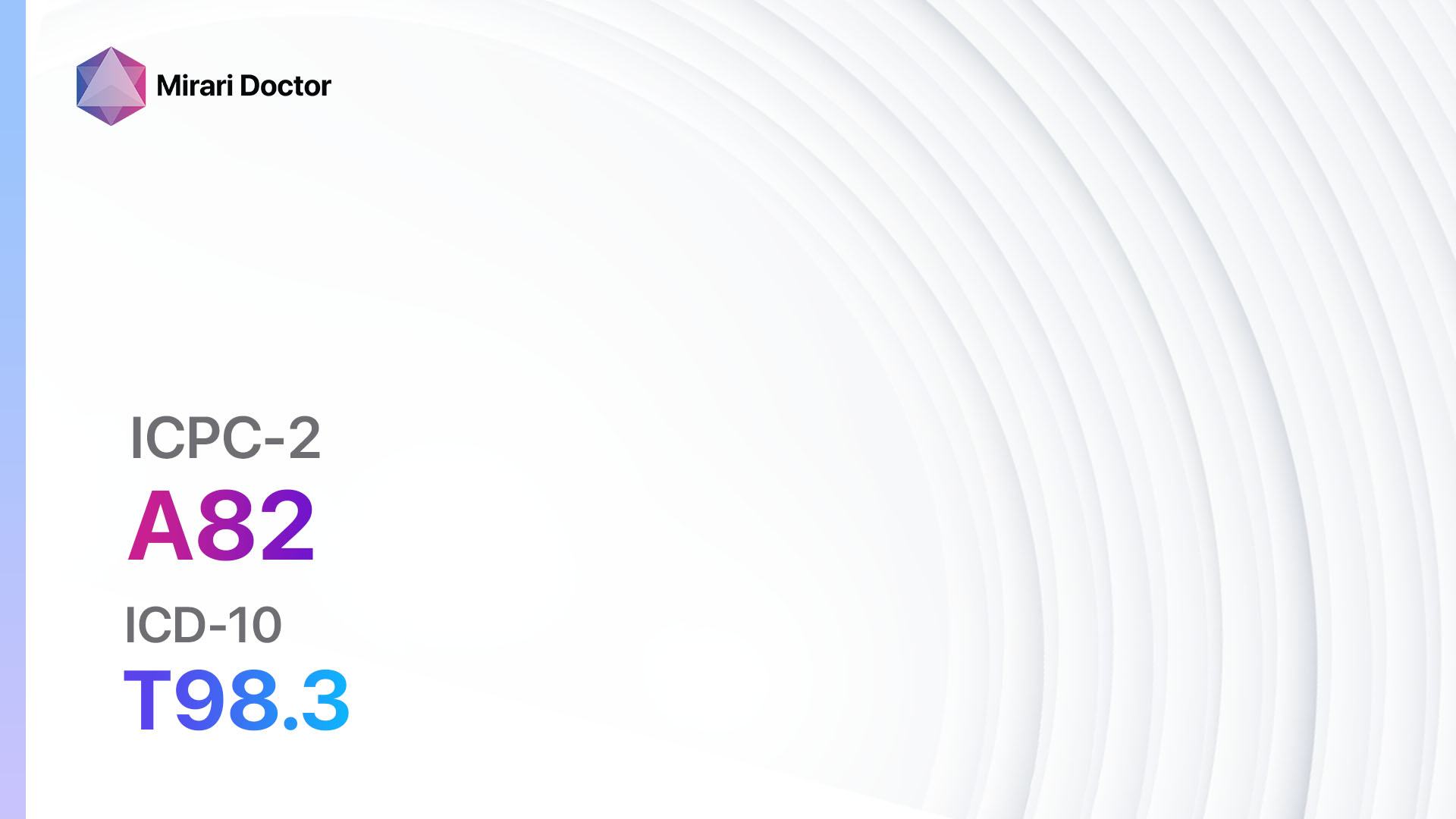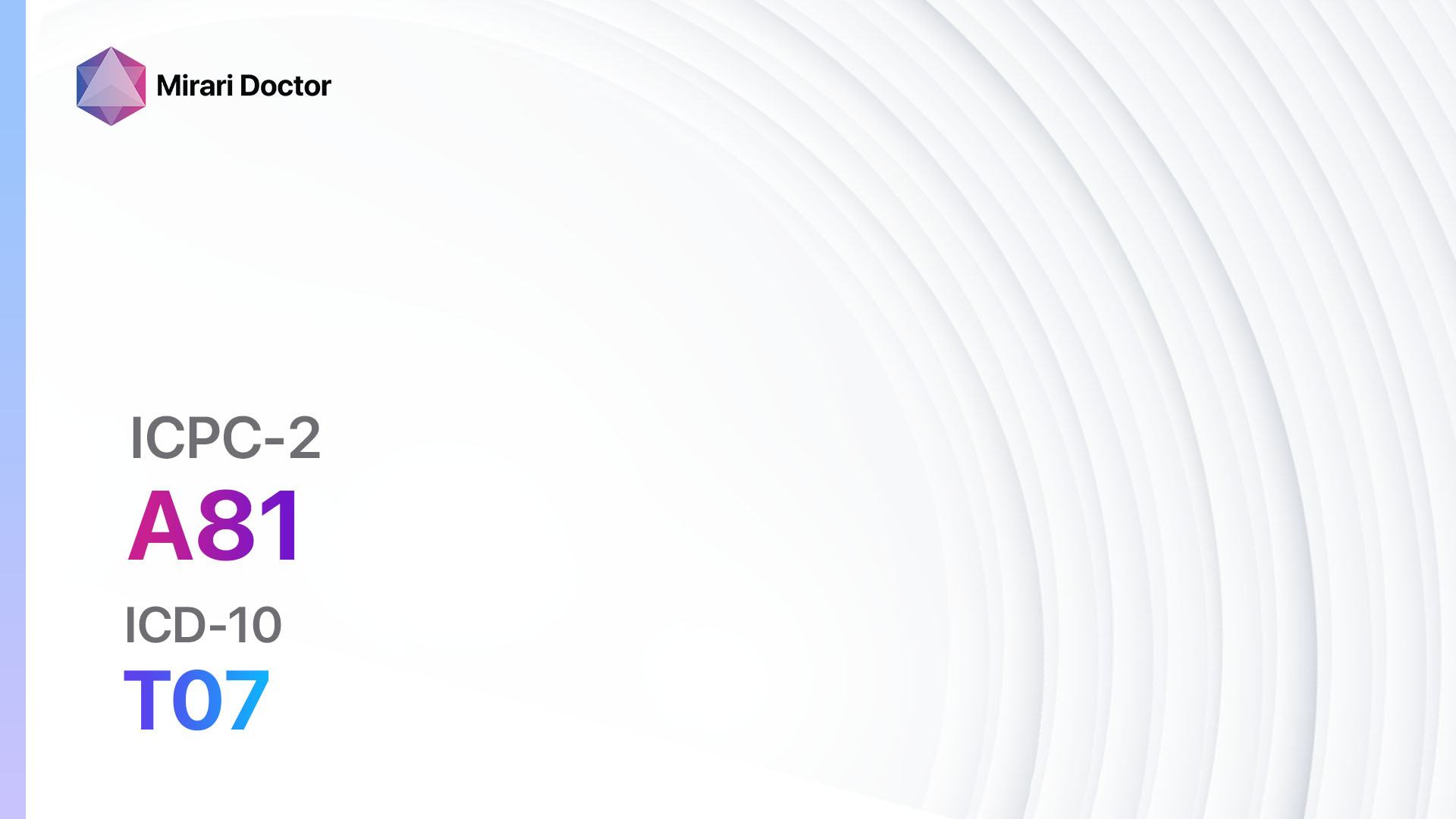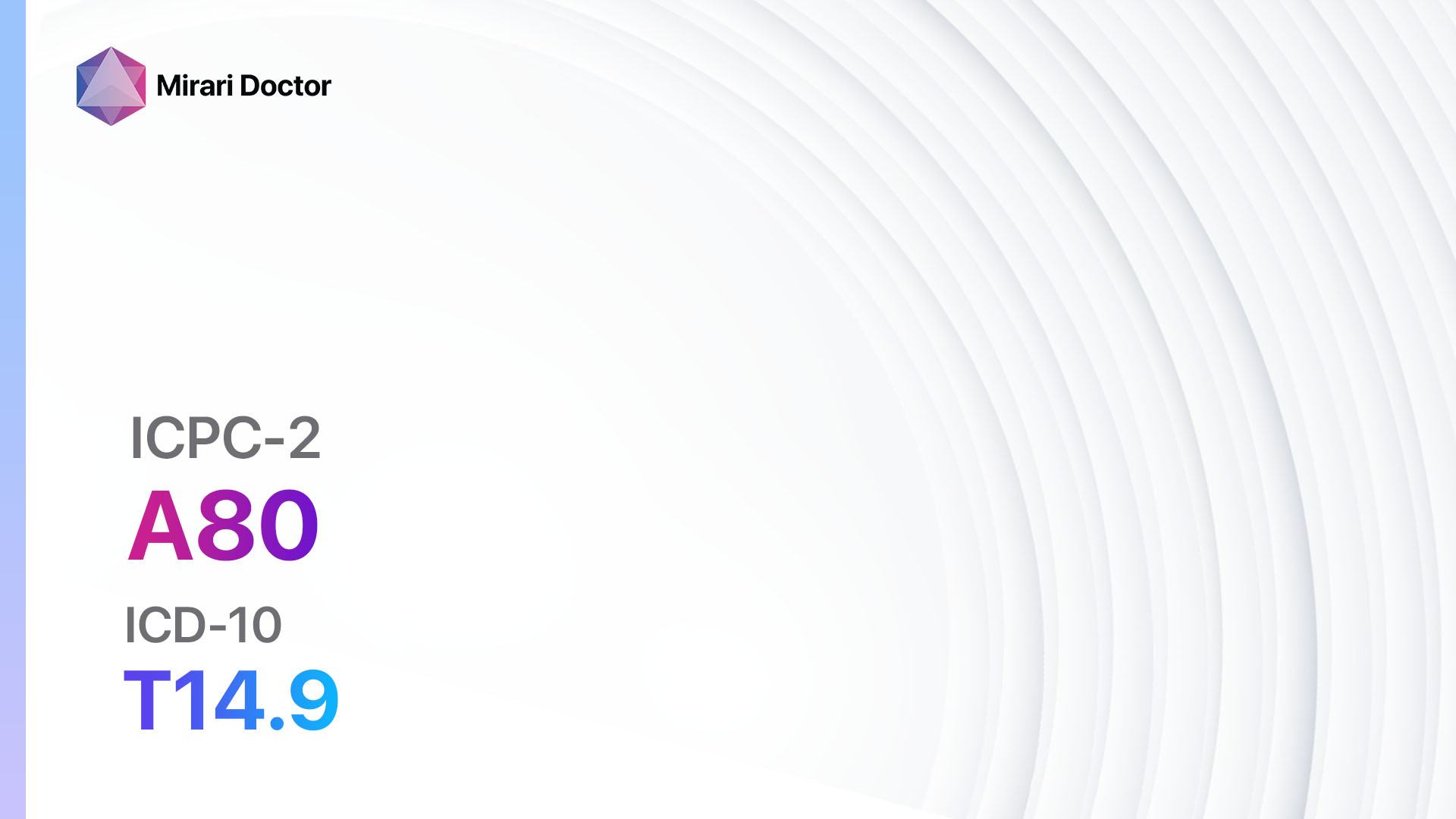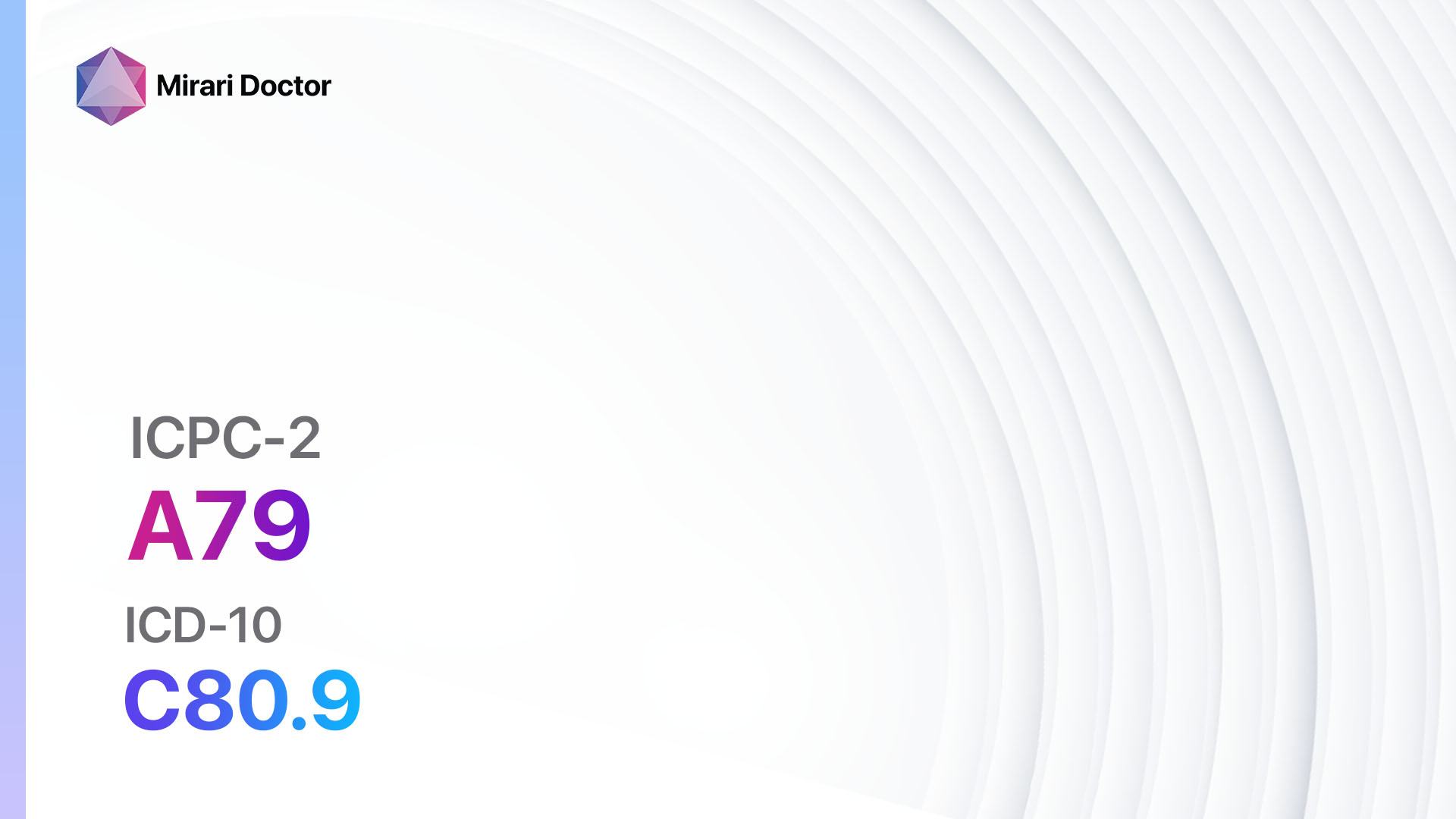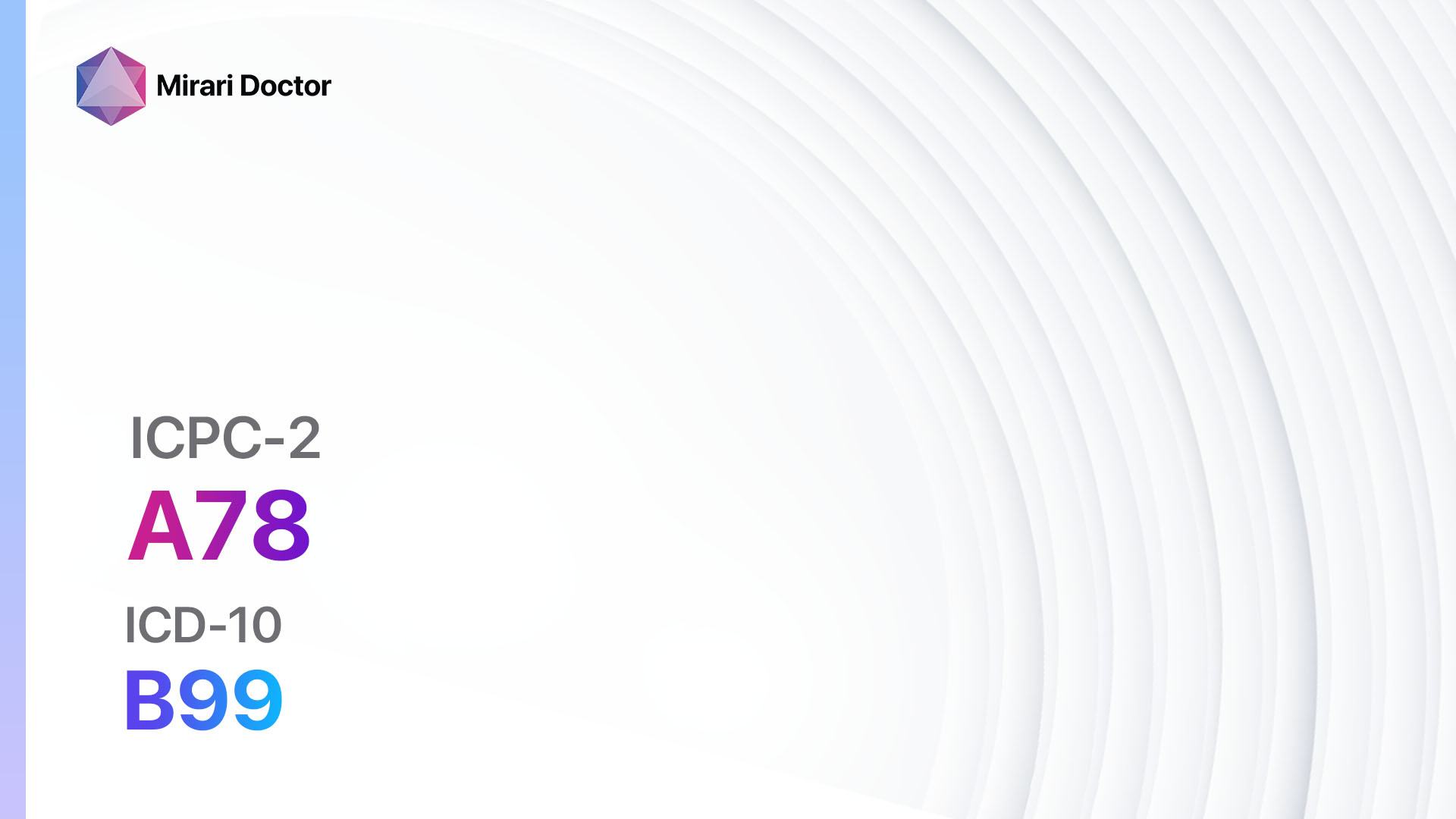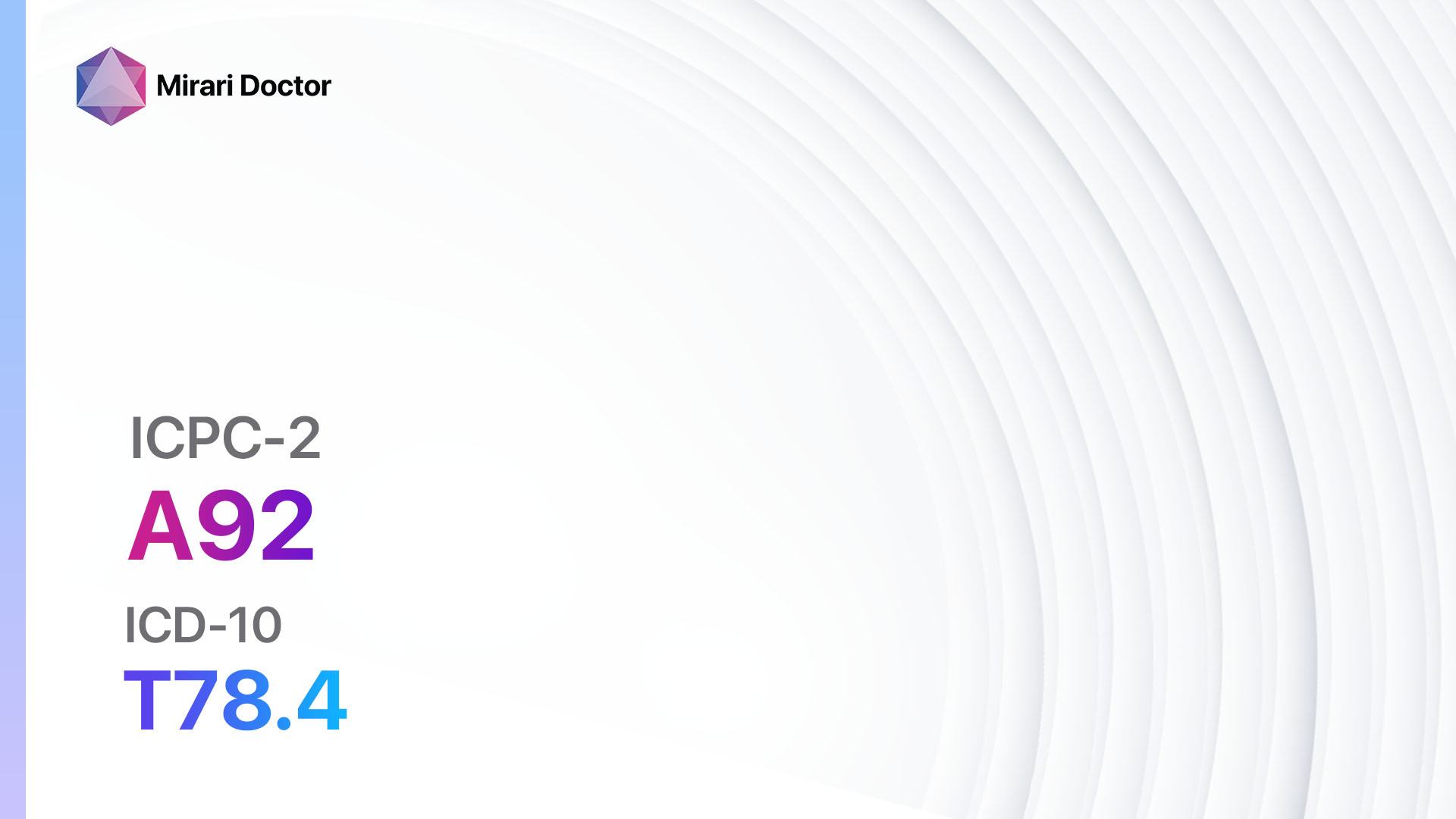
Introduction
Allergy/allergic reaction NOS refers to a non-specific allergic reaction that does not fit into a specific category[1]. It is characterized by symptoms such as itching, rash, hives, and swelling[2]. The aim of this guide is to provide a comprehensive overview of the symptoms, causes, diagnostic steps, possible interventions, and patient education for Allergy/allergic reaction NOS.
Codes
Symptoms
- Itching: Persistent itching sensation on the skin[5].
- Rash: Red, inflamed patches on the skin[5].
- Hives: Raised, itchy welts on the skin[5].
- Swelling: Swelling of the face, lips, tongue, or throat[5].
Causes
- Environmental allergens: Pollen, dust mites, pet dander, mold[6].
- Food allergens: Peanuts, tree nuts, shellfish, eggs, milk[6].
- Medications: Antibiotics, non-steroidal anti-inflammatory drugs (NSAIDs), contrast dyes[6].
- Insect stings: Bee stings, wasp stings, mosquito bites[6].
- Latex: Allergic reactions to latex products[6].
Diagnostic Steps
Medical History
- Gather information about the patient’s symptoms, including the onset, duration, and severity[7].
- Identify any potential triggers or exposures that may have caused the allergic reaction[7].
- Determine if the patient has a history of allergies or allergic reactions[7].
Physical Examination
- Perform a thorough examination of the skin to assess for any visible signs of allergic reaction, such as rash or hives[8].
- Check for any swelling of the face, lips, tongue, or throat[8].
- Assess the patient’s vital signs, including blood pressure, heart rate, and respiratory rate[8].
Laboratory Tests
- Complete blood count (CBC): To assess for any abnormalities, such as elevated eosinophils, which may indicate an allergic reaction[9].
- Allergen-specific IgE blood test: Measures the level of specific IgE antibodies in the blood to identify potential allergens[9].
- Skin prick test: Small amounts of allergens are applied to the skin to determine if an allergic reaction occurs[9].
Diagnostic Imaging
- Diagnostic imaging is not typically necessary for the diagnosis of Allergy/allergic reaction NOS[10].
Other Tests
- Patch testing: Small amounts of potential allergens are applied to the skin and covered with patches to assess for delayed allergic reactions.
- Drug provocation test: Involves the administration of a suspected medication under medical supervision to determine if an allergic reaction occurs.
Follow-up and Patient Education
- Schedule a follow-up appointment to assess the patient’s response to treatment and provide further education.
- Educate the patient about potential triggers and how to avoid them.
- Provide information on the use of antihistamines and epinephrine auto-injectors for the management of allergic reactions.
Possible Interventions
Traditional Interventions
Medications:
Top 5 drugs for Allergy/allergic reaction NOS:
- Antihistamines (e.g., Loratadine, Cetirizine, Fexofenadine):
- Cost: Generic versions can be $3-$20/month.
- Contraindications: Hypersensitivity to antihistamines.
- Side effects: Drowsiness, dry mouth, headache.
- Severe side effects: Rare, but may include severe allergic reactions.
- Drug interactions: Sedatives, alcohol.
- Warning: May cause drowsiness, use caution when driving or operating machinery.
- Corticosteroids (e.g., Prednisone, Dexamethasone):
- Cost: Generic versions can be $4-$30/month.
- Contraindications: Active infections, systemic fungal infections.
- Side effects: Increased appetite, weight gain, mood changes.
- Severe side effects: Increased risk of infections, adrenal suppression.
- Drug interactions: NSAIDs, anticoagulants.
- Warning: Long-term use may require gradual tapering to avoid adrenal insufficiency.
- Epinephrine auto-injector (e.g., EpiPen, Auvi-Q):
- Cost: $100-$300 for a two-pack.
- Contraindications: None in emergency situations.
- Side effects: Increased heart rate, anxiety.
- Severe side effects: Rare, but may include severe hypertension or arrhythmias.
- Drug interactions: Beta-blockers.
- Warning: Should be used immediately in case of severe allergic reaction.
- Mast cell stabilizers (e.g., Cromolyn sodium, Nedocromil):
- Cost: Generic versions can be $20-$50/month.
- Contraindications: None.
- Side effects: Throat irritation, cough.
- Severe side effects: Rare, but may include bronchospasm.
- Drug interactions: None.
- Warning: Should be used regularly to prevent allergic reactions.
- Leukotriene modifiers (e.g., Montelukast, Zafirlukast):
- Cost: Generic versions can be $10-$50/month.
- Contraindications: None.
- Side effects: Headache, gastrointestinal upset.
- Severe side effects: Rare, but may include neuropsychiatric events.
- Drug interactions: None.
- Warning: May be used as an alternative to inhaled corticosteroids for asthma management.
Alternative Drugs:
- Nasal corticosteroids (e.g., Fluticasone, Budesonide): Used for allergic rhinitis symptoms.
- Decongestants (e.g., Pseudoephedrine, Phenylephrine): Provide temporary relief of nasal congestion.
- Anticholinergic nasal sprays (e.g., Ipratropium bromide): Used for allergic rhinitis symptoms.
- Mast cell stabilizing eye drops (e.g., Ketotifen, Nedocromil): Used for allergic conjunctivitis symptoms.
- Topical corticosteroids (e.g., Hydrocortisone, Triamcinolone): Used for allergic skin reactions.
Surgical Procedures:
- Surgical procedures are not typically necessary for the treatment of Allergy/allergic reaction NOS.
Alternative Interventions
- Acupuncture: May help alleviate symptoms of allergic reactions. Cost: $60-$120 per session.
- Herbal supplements: Some herbs, such as butterbur and stinging nettle, may have potential benefits for reducing allergy symptoms. Cost: Varies depending on the specific supplement.
- Probiotics: Some studies suggest that certain strains of probiotics may help modulate the immune response and reduce allergic reactions. Cost: Varies depending on the specific product.
- Nasal irrigation: Using a saline solution to rinse the nasal passages can help alleviate nasal congestion and reduce allergy symptoms. Cost: $10-$20 for a nasal irrigation kit.
- Breathing exercises: Techniques such as deep breathing and diaphragmatic breathing may help reduce symptoms of allergic reactions. Cost: Free.
Lifestyle Interventions
- Avoidance of allergens: Identifying and avoiding triggers can help prevent allergic reactions. Cost: Varies depending on the specific allergen.
- Allergen-proof bedding: Using allergen-proof covers for pillows and mattresses can help reduce exposure to dust mites. Cost: $20-$50 per cover.
- Air purifiers: Using high-efficiency particulate air (HEPA) filters can help remove allergens from the air. Cost: $100-$300 for a HEPA air purifier.
- Regular cleaning: Keeping the home clean and free of dust and pet dander can help reduce allergic reactions. Cost: Varies depending on cleaning products used.
- Stress management: Stress can exacerbate allergic reactions, so practicing stress management techniques such as meditation or yoga may be beneficial. Cost: Varies depending on the specific technique.
It is important to note that the cost ranges provided are approximate and may vary depending on the location and availability of the interventions.
Mirari Cold Plasma Alternative Intervention
Understanding Mirari Cold Plasma
- Safe and Non-Invasive Treatment: Mirari Cold Plasma is a safe and non-invasive treatment option for various skin conditions. It does not require incisions, minimizing the risk of scarring, bleeding, or tissue damage.
- Efficient Extraction of Foreign Bodies: Mirari Cold Plasma facilitates the removal of foreign bodies from the skin by degrading and dissociating organic matter, allowing easier access and extraction.
- Pain Reduction and Comfort: Mirari Cold Plasma has a local analgesic effect, providing pain relief during the treatment, making it more comfortable for the patient.
- Reduced Risk of Infection: Mirari Cold Plasma has antimicrobial properties, effectively killing bacteria and reducing the risk of infection.
- Accelerated Healing and Minimal Scarring: Mirari Cold Plasma stimulates wound healing and tissue regeneration, reducing healing time and minimizing the formation of scars.
Mirari Cold Plasma Prescription
Video instructions for using Mirari Cold Plasma Device – A92 Allergy/allergic reaction NOS (ICD-10:T78.4)
| Mild | Moderate | Severe |
| Mode setting: 1 (Infection) Location: 0 (Localized) Morning: 15 minutes, Evening: 15 minutes |
Mode setting: 1 (Infection) Location: 0 (Localized) Morning: 30 minutes, Lunch: 30 minutes, Evening: 30 minutes |
Mode setting: 1 (Infection) Location: 0 (Localized) Morning: 30 minutes, Lunch: 30 minutes, Evening: 30 minutes |
| Mode setting: 2 (Wound Healing) Location: 0 (Localized) Morning: 15 minutes, Evening: 15 minutes |
Mode setting: 2 (Wound Healing) Location: 0 (Localized) Morning: 30 minutes, Lunch: 30 minutes, Evening: 30 minutes |
Mode setting: 2 (Wound Healing) Location: 0 (Localized) Morning: 30 minutes, Lunch: 30 minutes, Evening: 30 minutes |
| Mode setting: 7 (Immunotherapy) Location: 1 (Sacrum) Morning: 15 minutes, Evening: 15 minutes |
Mode setting: 7 (Immunotherapy) Location: 1 (Sacrum) Morning: 30 minutes, Lunch: 30 minutes, Evening: 30 minutes |
Mode setting: 7 (Immunotherapy) Location: 1 (Sacrum) Morning: 30 minutes, Lunch: 30 minutes, Evening: 30 minutes |
| Total Morning: 45 minutes approx. $7.50 USD, Evening: 45 minutes approx. $7.50 USD |
Total Morning: 90 minutes approx. $15 USD, Lunch: 90 minutes approx. $15 USD, Evening: 90 minutes approx. $15 USD, |
Total Morning: 90 minutes approx. $15 USD, Lunch: 90 minutes approx. $15 USD, Evening: 90 minutes approx. $15 USD, |
| Usual treatment for 7-60 days approx. $105 USD – $900 USD | Usual treatment for 6-8 weeks approx. $1,890 USD – $2,520 USD |
Usual treatment for 3-6 months approx. $4,050 USD – $8,100 USD
|
 |
|
Use the Mirari Cold Plasma device to treat Allergy/allergic reaction NOS effectively.
WARNING: MIRARI COLD PLASMA IS DESIGNED FOR THE HUMAN BODY WITHOUT ANY ARTIFICIAL OR THIRD PARTY PRODUCTS. USE OF OTHER PRODUCTS IN COMBINATION WITH MIRARI COLD PLASMA MAY CAUSE UNPREDICTABLE EFFECTS, HARM OR INJURY. PLEASE CONSULT A MEDICAL PROFESSIONAL BEFORE COMBINING ANY OTHER PRODUCTS WITH USE OF MIRARI.
Step 1: Cleanse the Skin
- Start by cleaning the affected area of the skin with a gentle cleanser or mild soap and water. Gently pat the area dry with a clean towel.
Step 2: Prepare the Mirari Cold Plasma device
- Ensure that the Mirari Cold Plasma device is fully charged or has fresh batteries as per the manufacturer’s instructions. Make sure the device is clean and in good working condition.
- Switch on the Mirari device using the power button or by following the specific instructions provided with the device.
- Some Mirari devices may have adjustable settings for intensity or treatment duration. Follow the manufacturer’s instructions to select the appropriate settings based on your needs and the recommended guidelines.
Step 3: Apply the Device
- Place the Mirari device in direct contact with the affected area of the skin. Gently glide or hold the device over the skin surface, ensuring even coverage of the area experiencing.
- Slowly move the Mirari device in a circular motion or follow a specific pattern as indicated in the user manual. This helps ensure thorough treatment coverage.
Step 4: Monitor and Assess:
- Keep track of your progress and evaluate the effectiveness of the Mirari device in managing your Allergy/allergic reaction NOS. If you have any concerns or notice any adverse reactions, consult with your health care professional.
Note
This guide is for informational purposes only and should not replace the advice of a medical professional. Always consult with your healthcare provider or a qualified medical professional for personal advice, diagnosis, or treatment. Do not solely rely on the information presented here for decisions about your health. Use of this information is at your own risk. The authors of this guide, nor any associated entities or platforms, are not responsible for any potential adverse effects or outcomes based on the content.
Mirari Cold Plasma System Disclaimer
- Purpose: The Mirari Cold Plasma System is a Class 2 medical device designed for use by trained healthcare professionals. It is registered for use in Thailand and Vietnam. It is not intended for use outside of these locations.
- Informational Use: The content and information provided with the device are for educational and informational purposes only. They are not a substitute for professional medical advice or care.
- Variable Outcomes: While the device is approved for specific uses, individual outcomes can differ. We do not assert or guarantee specific medical outcomes.
- Consultation: Prior to utilizing the device or making decisions based on its content, it is essential to consult with a Certified Mirari Tele-Therapist and your medical healthcare provider regarding specific protocols.
- Liability: By using this device, users are acknowledging and accepting all potential risks. Neither the manufacturer nor the distributor will be held accountable for any adverse reactions, injuries, or damages stemming from its use.
- Geographical Availability: This device has received approval for designated purposes by the Thai and Vietnam FDA. As of now, outside of Thailand and Vietnam, the Mirari Cold Plasma System is not available for purchase or use.
References
- Johansson, S. G. O., Bieber, T., Dahl, R., Friedmann, P. S., Lanier, B. Q., Lockey, R. F., … & Williams, H. C. (2004). Revised nomenclature for allergy for global use: Report of the Nomenclature Review Committee of the World Allergy Organization, October 2003. Journal of allergy and clinical immunology, 113(5), 832-836.
- Simons, F. E. R., Ardusso, L. R., Bilò, M. B., El-Gamal, Y. M., Ledford, D. K., Ring, J., … & Thong, B. Y. (2011). World Allergy Organization guidelines for the assessment and management of anaphylaxis. World Allergy Organization Journal, 4(2), 13-37.
- WONCA International Classification Committee. (1998). ICPC-2: International classification of primary care. Oxford University Press, USA.
- World Health Organization. (2015). International statistical classification of diseases and related health problems (10th ed.).
- Schatz, S. N., & Weber, R. J. (2015). Adverse drug reactions. ACCP Updates in Therapeutics, 1-13.
- Riedl, M. A., & Casillas, A. M. (2003). Adverse drug reactions: types and treatment options. American family physician, 68(9), 1781-1790.
- Bickley, L. S. (2017). Bates’ guide to physical examination and history taking (12th ed.). Wolters Kluwer.
- Jarvis, C. (2020). Physical examination and health assessment (8th ed.). Elsevier.
- Pagana, K. D., Pagana, T. J., & Pagana, T. N. (2019). Mosby’s diagnostic and laboratory test reference (14th ed.). Elsevier.
- Eisenberg, R. L. (2019). Clinical imaging: An atlas of differential diagnosis (6th ed.). Wolters Kluwer.
Related articles
Made in USA


